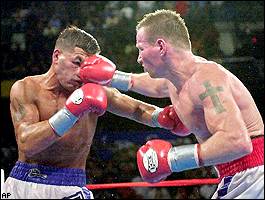I've stated numerous times that I believe that Americans are ringing up a collective doctors bill that we can't pay because of our rampant obesity. As I thought about it, that's not the whole problem but a root cause. Another key part of the problem is that some Americans think it's a right owed to them. I wouldn't be as concerned about America's obese medical bill if the average American would pay for their piece health care bill. Obviously, they can't. Instead, they treat it as an entitlement and expect the government to pay for it. The problem is that's 150,000,000-198,000,000 people, depending on which polling data you chose to believe. It doesn't matter whether we pay for it via the public or private sector. This is unsustainable because it's unaffordable.

About six weeks ago, The American Diabetes Association released a study which startled a lot of people. According Dr Elbert Huang, the number of diagnosed and undiagnosed cases of diabetes will balloon from 23,700,000 to 44,000,000 people by 2034. That would result in the cost of diabetes-related treatment going from $117,000,000,000 to $336,000,000,000.
This is alarming for sure but I'm even more concerned because I think that their 2034projection is too far away. They're assuming that 65% of the country will be overweight or obese in 25 years. By some estimates, WE'RE ALREADY THERE! Who is to say that these diabetes-related costs aren't just around the corner? Diabetes is a gateway disease, leading to a host of other, very serious medical problems. Who knows how much all of that could cost?

For those who don't pay attention, or are in a foreign country, Obama's, and the Democrat Party's, latest stab at health care reform that includes some form of universal coverage just hit a major stag with the election of a Republican, Scott Brown, to Massachussetts' vacant Senate seat. In fact, if Brown is seated in the Senate, it's unlikely that any health care reform gets passed this year, if ever.
If there's anything in the way of insuring every American through the federal government, I hope that it never happens. If it does, then there are two outcomes. The first is that the government will, by default, make it every American's right to be as fat as they want to be without consequence. Or, they'll give themselves the power to micromanage what Americans eat when it becomes clear to them that they can't provide adequate coverage for all of these fat people, much like what New York City Mayor Michael Bloomberg is doing with trans fats and salt or Obama wants to do with soft drink taxes.
If my opinion counts for anything, I think that the reform that should happen is that health insurance should operate like auto insurance. It should be there to cover major health care costs that are out of the control of the holder of the insurance plan. Routine maintenance things, such as drugs and doctor visits, shouldn't be covered by the plan. So, if a fat person wants to maintain their unhealthy lifestyle, let them pay for it and not pass the cost off on someone else. Furthermore, if they chose to live such an unhealthy lifestyle, they should have to pay more, just like bad drivers who get speeding tickets. They do the exact, same thing to smokers already.
I realize it probably won't happen but I have little doubt if fat people had to bear the costs of their bad decisions, they'd find a way to lose some weight. Here's to hoping!








